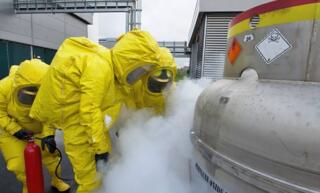
Common Mistakes To Avoid When Crafting Your Hazmat Plan
If a facility deals with hazardous materials, it needs a hazmat plan in place. Hazmat plans document maintain safety standards for a place. They outline emergency responses, rescue risks, and how to follow government and industry rules and regulations. Crafting a hazmat plan requires organization and careful consideration. Mistakes may lead to widespread damage, injuries, and even death. Consider these common mistakes to avoid when crafting your hazmat plan so that you can create clear guidance for your employees.
Performing Inadequate Risk Assessments
Begin by conducting a risk assessment. Identify and evaluate potential hazards around the facility. Perform a thorough assessment. Overlooking any dangers might expose you and your employees to threats from chemical, biological, nuclear, or radiological incidents and accidents. Consider hiring a professional assessor to ensure a comprehensive report. They have the tools and knowledge to recognize hazards and deliver a thorough overview of every possible risk.
Overlooking Training and Drills
When disaster hits, do you and your employees know how to react? A plan is no good if people don’t know how to use it. Schedule regular educational sessions and disaster drills and training. Make it clear that everyone has a job to do when it comes to preventing and dealing with accidents. Run drills and assess their success, noting where improvement is necessary. Educated employees—and that includes management and any contractors or temporary help—are more effective and confident in emergencies.
Ignoring Regulatory Changes
Rules and regulations change. Be aware of updates to regulations at the local, state, and federal levels, and adjust your hazmat plan to meet them. Subject your plan to regular review to avoid fines, penalties, and other issues. Industry newsletters and federal agencies are the best sources for updates. Sign up for emailed updates and press releases on the EPA, OSHA, and related websites. Joining professional industrial associations also grants the inside track on regulatory changes.
Failing To Manage Inventory
Account for everything in your inventory. During an emergency, complete and thorough records of hazardous materials and waste provide immediate information on threat levels and more. Track, tabulate, and frequently audit your inventory, checking that everything follows the proper storage and labeling procedures. Not knowing the location and contents of your inventory is akin to entering a disaster situation wearing blinders.
Neglecting Compatibility and Equipment Testing
Hazmat plans require the right equipment. Assess whether there are adequate supplies of safety equipment, tools, and protective clothing. Familiarize yourself with your gear; for example, find out the facts about chemical suits and respirators and the exact types you need for your facility. Through drills and training, ensure employees know how to gear up quickly and use the equipment. Subject equipment and PPE to frequent inspection and testing so that you know it will be ready when needed.
We’ve covered common mistakes to avoid when crafting your hazmat plan. Crafting a hazmat plan requires precision and detailed organization. Knowing and avoiding the above grants a greater advantage.






